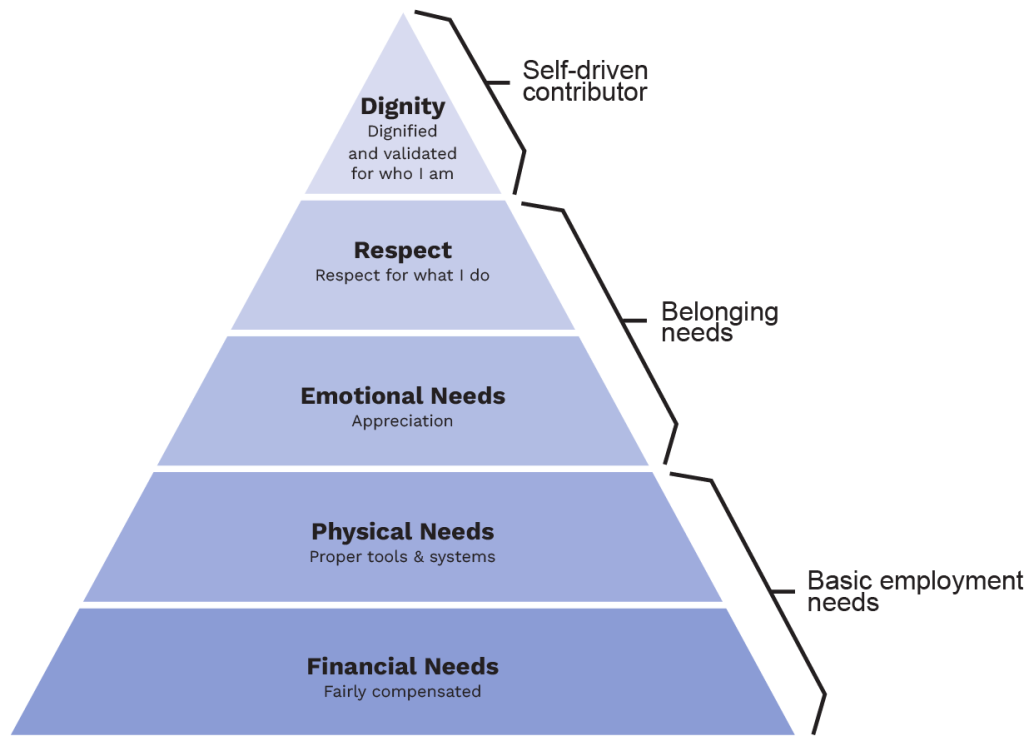The ROI of employee recognition
Wednesday, May 8, 2024 - Dignify

Motivating people isn’t easy. It can be a mountain of a task. As a leader, you know that. But you also know that providing that motivation is one of the most important aspects of your job. It’s what keeps your team firing on all cylinders and producing the best work that they can.
Motivated people excel in their role, they turn over results above expectations consistently, they collaborate well, and it seems like no matter what task you pass on to them, they find a way to get it done, and get it done well. Motivated employees are much more likely to be actively engaged with their work meaning that they will:
- Express passion about the company’s goals and objectives
- Consistently look for opportunities to go above and beyond
- Drive collaboration between their teammates
- Express a positive attitude and unwavering commitment
- Make themselves an asset and a direct contributor to the company’s bottom line
An actively engaged employee is one that has been supported well by their leader, with each of their five needs in the Employee Hierarchy of Needs (financial, physical, emotional, respect, and dignity) being met regularly in the workplace.

The Power of Recognition
Here are some interesting facts published by Nectar that illustrate the impact of recognizing your people:
- 83.6% of employees feel that recognition affects their motivation to succeed in their work
- Recognition has the biggest impact among 35-44 year olds, post-graduate degree earners, and employees earning between $75,000 and $99,999
- 77.9% of workers would be more productive given more frequent recognition
- 85% of 18-24 year olds would be more productive given more recognition
- Workers earning over $100,000 would be 84% more effective in their work given frequent recognition
- 87% of employees feel that meaningful recognition improves their job satisfaction
- Employees get the most value out of weekly or monthly recognition
- Those who receive weekly recognition are 153% more likely to feel valued at their workplace than those who only receive yearly recognition
- Manager recognition is the most impactful for employees across all demographic measures
It’s clear that recognizing your employees helps them excel in every way. It fulfills their dignity, improves their mental health, and helps them develop a sense of mattering at work, which is one of the most important metrics to track. One of the best things about employee recognition is that it’s something that can be done effectively with ease.
Getting started with recognition
- Awards
- Have you seen someone living your company’s core values? Hand out an award at your next team huddle to highlight them.
- Dignifies
- The Dignify Companion app, for those with a Business subscription, has a recognition feature built right in to make it easier than ever to engage employees.
- One-on-Ones
- If the person you want to recognize prefers to be praised privately, schedule time for a quality one-on-one with them, perhaps over lunch.
The Bottom Line
Motivating people isn’t an easy task – but recognizing people isn’t all too hard. As a leader, your efforts to regularly recognize your employees could make a significant positive impacting on performance, engagement, and retention. Take your first steps today to start recognizing your team members regularly, and let the results speak for themselves.

